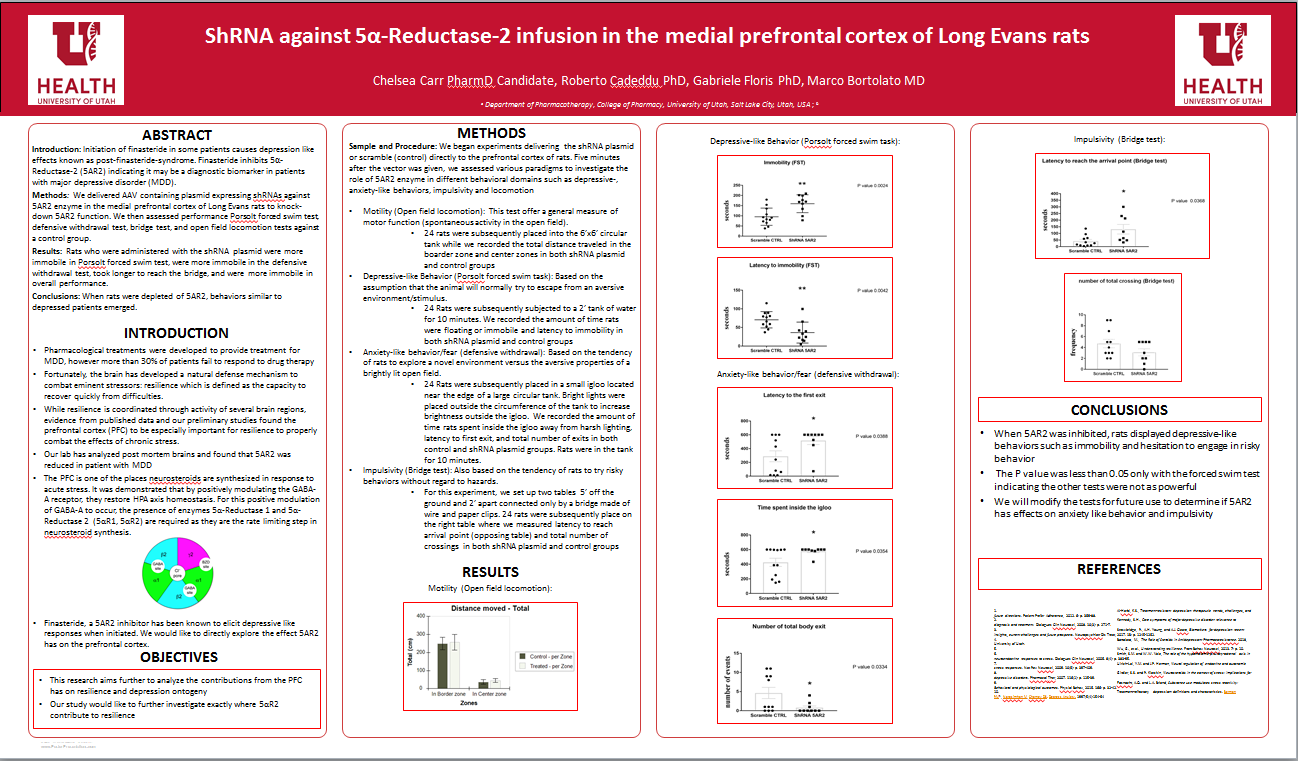ShRNA against 5α-Reductase-2 infusion in the medial prefrontal cortex of Long Evans rats

Abstract:
Introduction: Discontinuation of finasteride in some patients induces depression like symptoms known as post-finasteride-syndrome. Finasteride inhibits 5α-Reductase-2 (5AR2) indicating it may be a diagnostic biomarker in patients with major depressive disorder (MDD).
Methods: We delivered AAV containing plasmid expressing shRNAs against 5AR2 enzyme in the medial prefrontal cortex of Long Evans rats to knock-down 5AR2 function. We then assessed performance Porsolt forced swim test, defensive withdrawal test, bridge test, and open field locomotion tests against a control group. inactivity of 5ard is the biomarker, we found that 5ar2 is reduced in certain regions in MDD, might become a biomarker in future studies
Results: Rats who were administered with the shRNA plasmid were more immobile in Porsolt forced swim test, were more immobile in the defensive withdrawal test, took longer to reach the bridge, and were more immobile in overall performance. All of these behaviors are in line with depressive like symptoms
Conclusions: When rats were depleted of 5AR2, behaviors similar to depressed patients emerged.
Published in College of Pharmacy, Virtual Poster Session Spring 2020
Chelsea, very interesting data. I have a couple of questions. First, how did you verify that the 5AR2 was decreased by your shRNA treatment? Also were you blinded to the treatment of the animals when conducting the behavioral tests? Finally, a couple of your measures look like there might be a ceiling effect (e.g., latency to first exit, time in igloo) and another (number of total body exits) looks like there might be a floor effect. Can those tests be modified to avoid the ceiling and floor effects?
Great questions!
1. We performed preliminary studies to determine the correct amount of shRNA to give to the rats. After injection, we sacrificed the rats and assessed 5aR2 levels in the brain to determine if it was present.
2. The observers were blinded. We would film the tests of the rats and have multiple blinded observers interpret the behaviors of the rats.
3. I didn’t think about that, something I could bring up to my team mates. The tests could be modified to observe the rat’s behavior inside the igloo to see if there are behaviors we are mission that could further drive the research.
What an awesome project. It’s always interesting to see how different neurochemical imbalances can influence our behaviors.